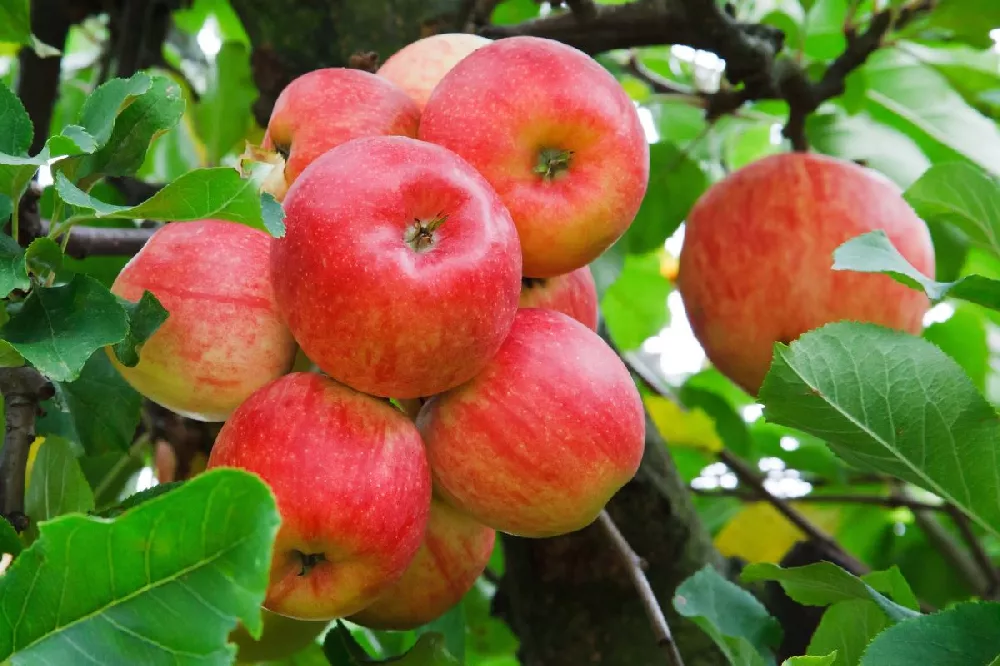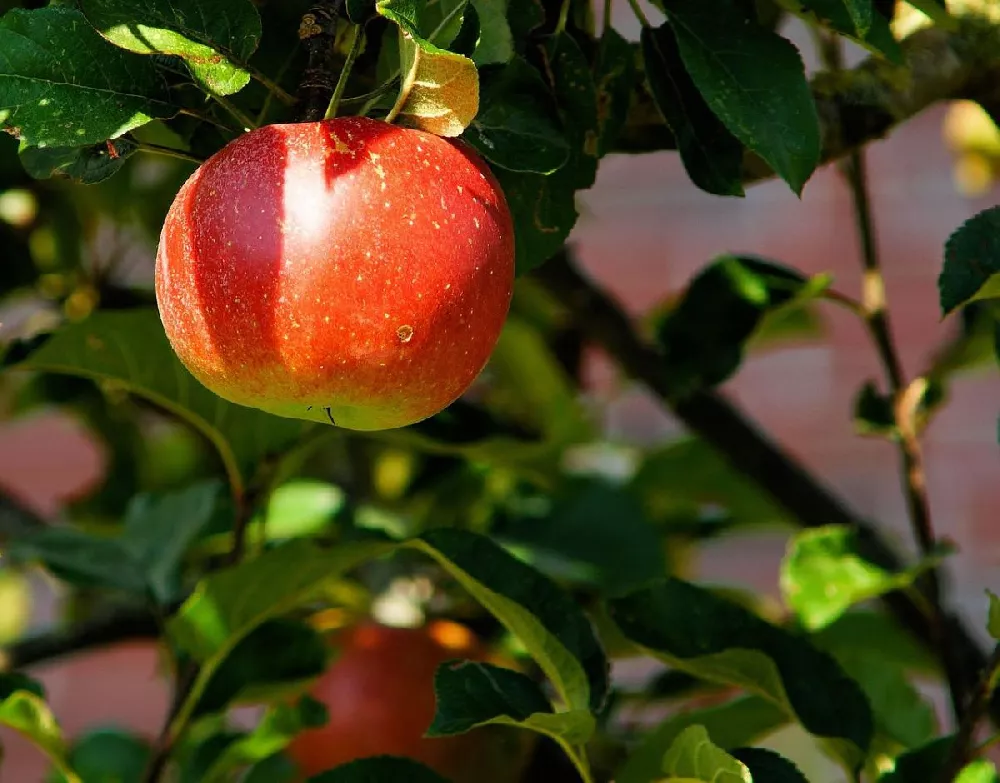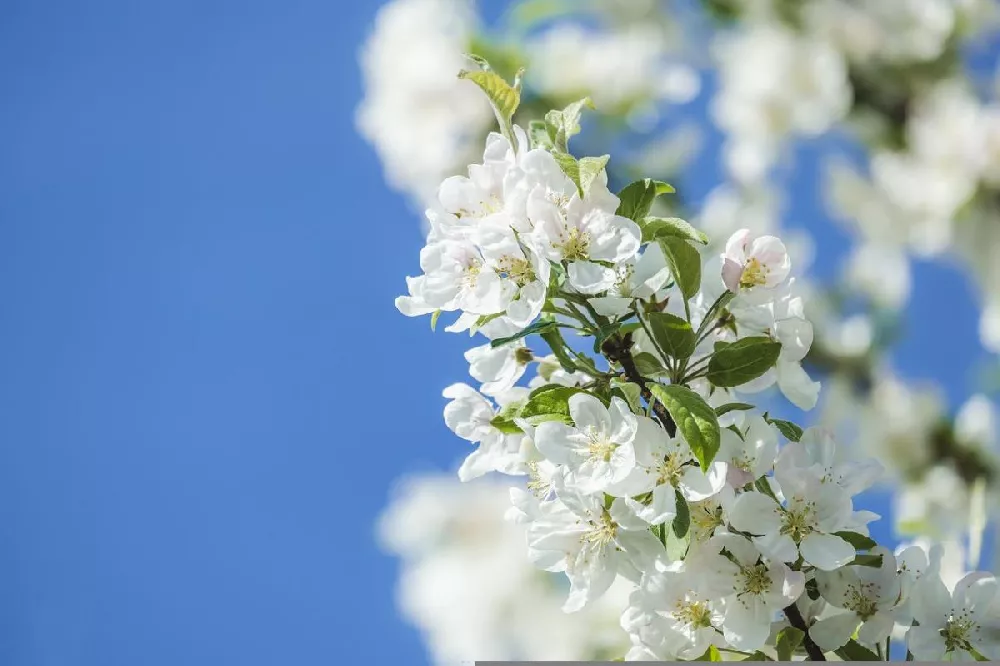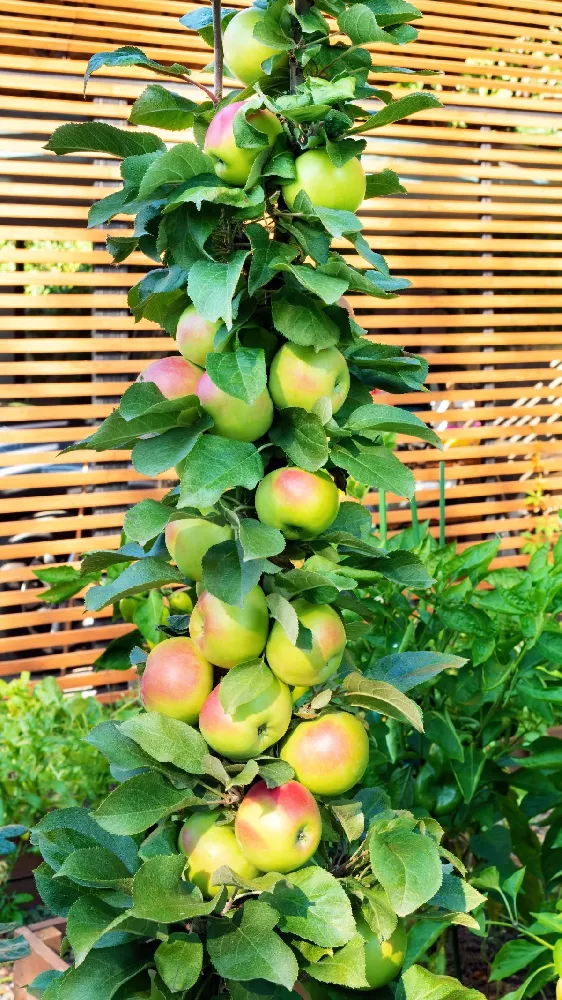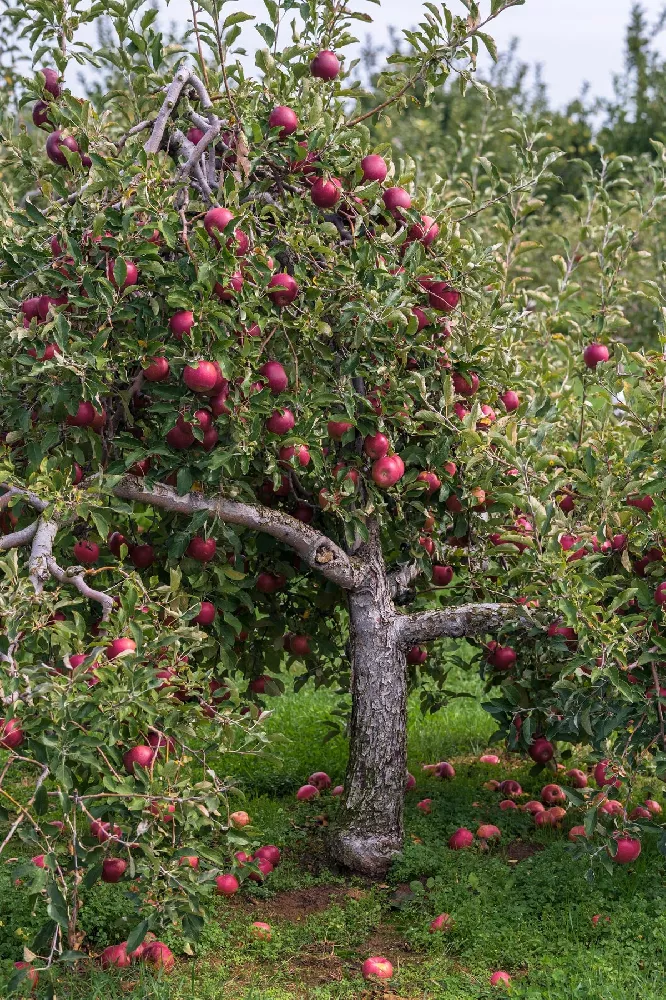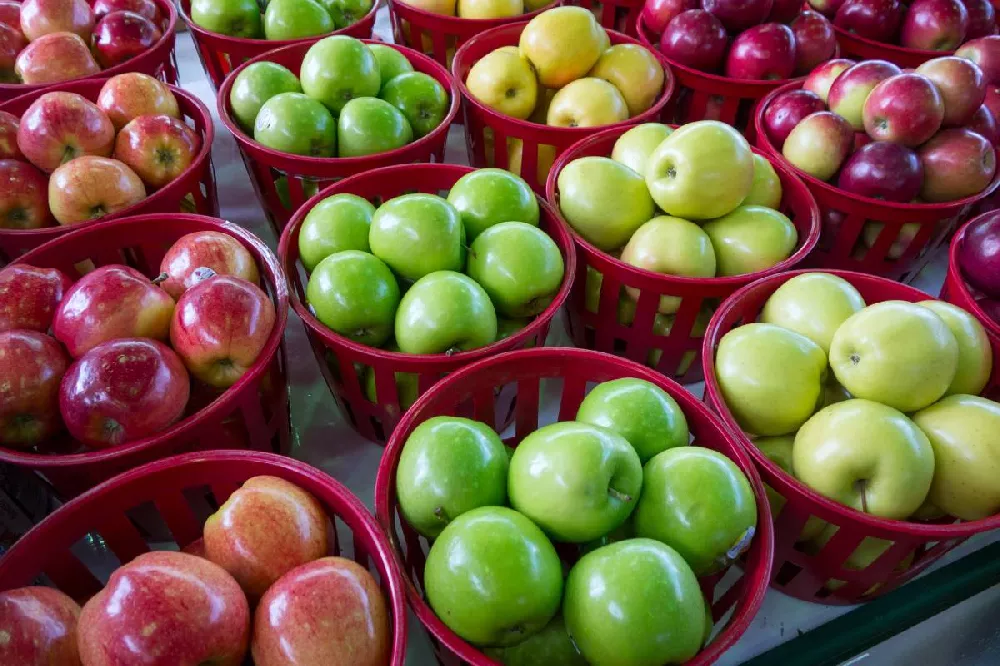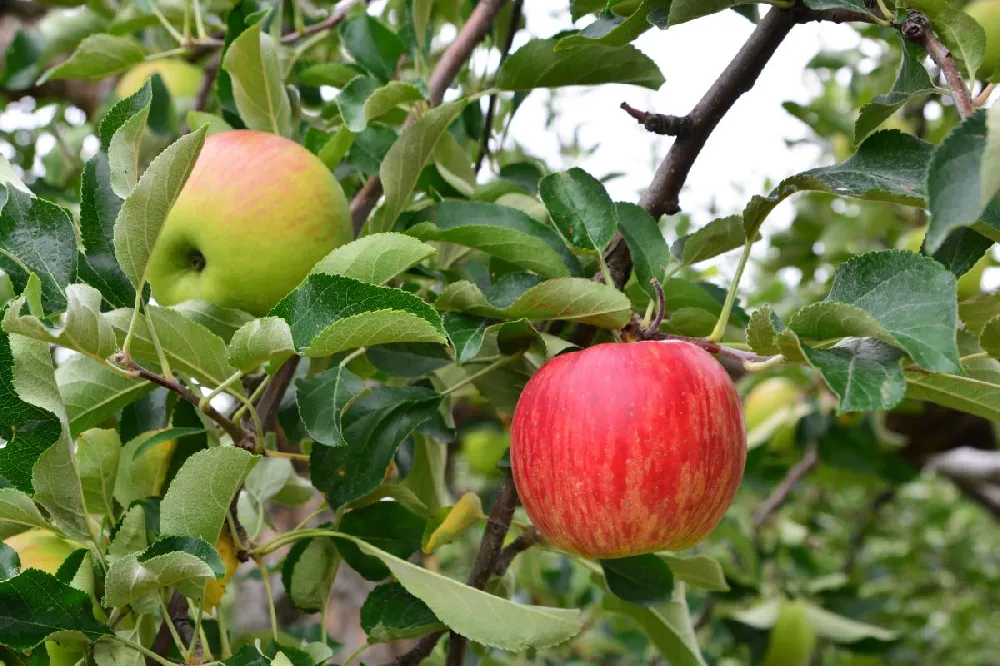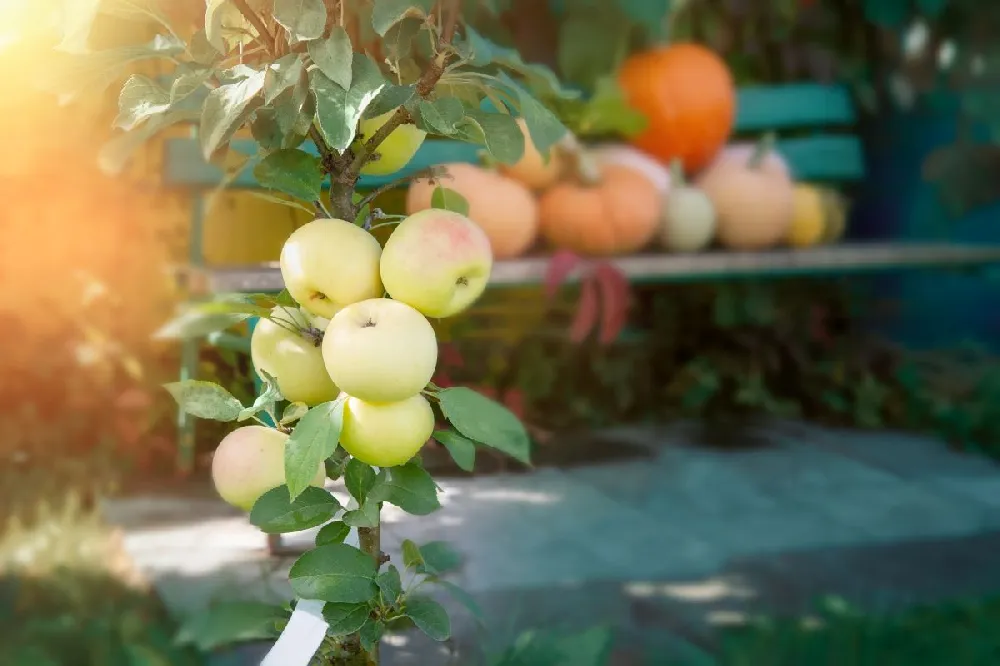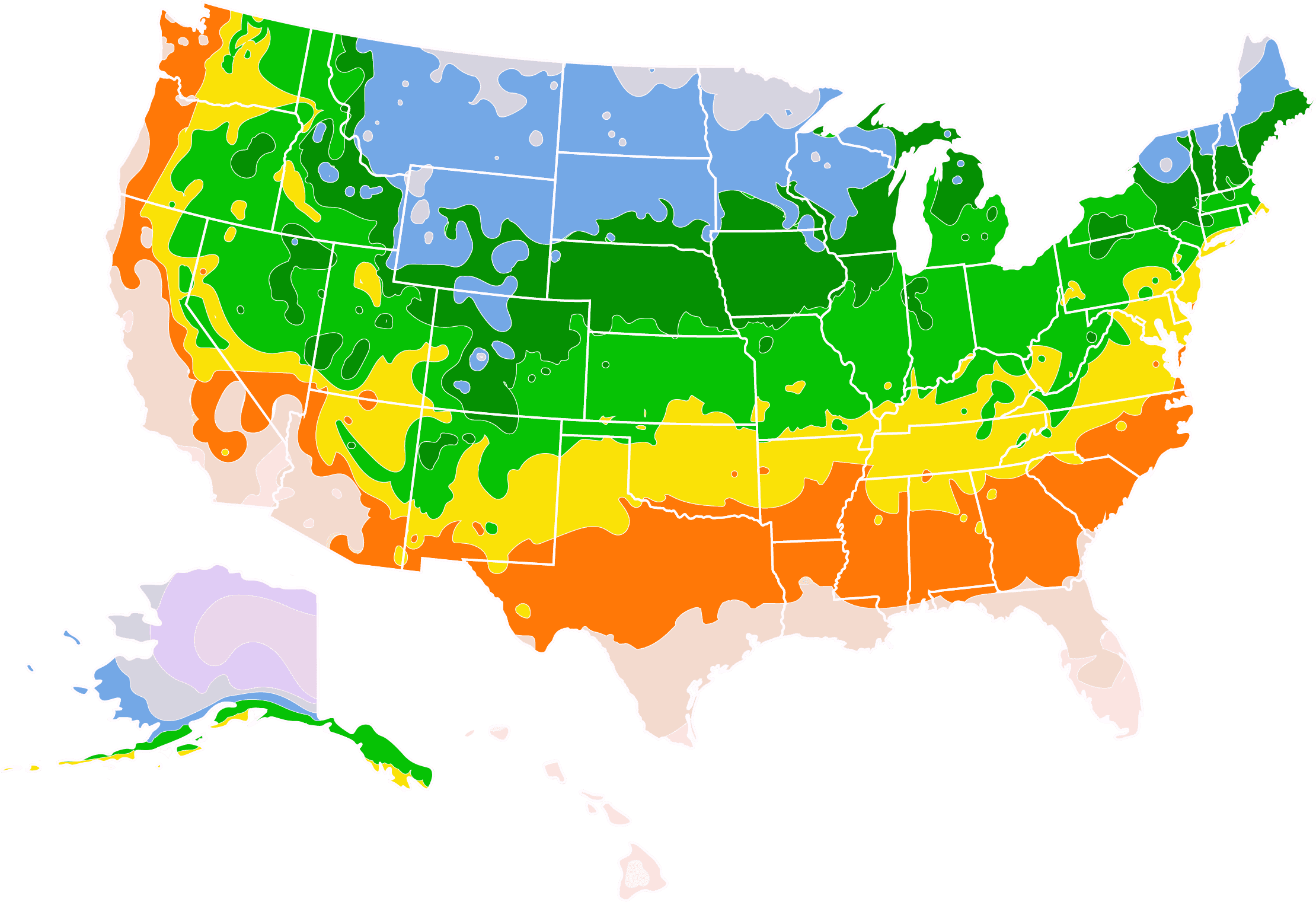- Home >
- Flowers >
- Trees and Plants with White Flowers >
- Low Chill Fuji Apple Tree
Low Chill Fuji Apple Tree for Sale - Buying & Growing Guide
- Ships in 1-2 days
- 1-Year Warranty Eligible
- Pots or accessories are not included unless specified in the product options.
Shipping Details:
Once your order is shipped, you’ll receive an email with a tracking number and estimated delivery date. Most orders ship immediately, but some items are seasonal and may only ship in spring or fall. These products are noted on the website.
Most popular apple trees require cold winters in order to produce their much sought-after fruits. This fact has made it impossible for gardeners in warmer regions to grow apples of their own — until now. The low chill Fuji apple tree, or Malus domestica 'Fuji,' is one of the rare apple trees that can provide an ample harvest even in regions with mild winters. This plant survives and develops fruits as far south as zone 9. Before those fruits arrive, this tree adds even more interest to your garden via its copious white blooms.
- It grows beautiful Fuji apples rivaling those you can find in your grocery store.
- The low-chill Fuji apple tree survives and produces well even in warmer climates.
- It blooms with beautiful white flowers.
Plant Care
Sunlight

The low chill Fuji apple tree Must grow in an area that receives at least six hours of direct sunlight per day.
Watering
It typically performs best with water once per week during the growing season.
Fertilizing

Use a nitrogen-rich fertilizer one to three times during spring and summer, depending on the plant's age.
Planting and Care
Planting instructions
For the best growth and fruit production, you should plant your low chill Fuji apple tree where there is full sunlight and moist, well-drained soil. Once you find such a location, dig a hole that is as deep as the root ball is tall and about twice as wide as the root ball. Use a hand rake or a garden knife to loosen the sides of the root ball before placing it into the planting hole. Backfill with nutrient-rich soil and cover the planting area with a layer of organic mulch.
Watering and nutrients
After planting a low chill Fuji apple tree, you should water it as much as needed to maintain consistent soil moisture to encourage root establishment. Once your tree has adapted to its growing location, you should continue watering it regularly at about a once- per- week interval. Increase your watering during warmer months, droughts, and periods of fruit development. When your tree is young, you can feed it three times during spring and early summer. At maturity, you can reduce your fertilization rate to once per year in spring.
Pollination
The low chill Fuji apple tree is not a self-fertile plant, which means that you will need to obtain and plant a companion plant nearby to aid pollination. Fortunately, there are numerous apple tree varieties that can play this role, including McIntosh, Granny Smith, Pink Lady, and Red Delicious apple trees. After planting the low chill Fuji apple tree and a pollinating partner, the flowers of these trees will attract pollinator insect species to transfer pollen from one tree to the other.
Pruning
The best time to prune a low chill Fuji apple tree is during this plant’s dormant phase in the winter or early spring. As is true when pruning many other fruit trees, you should use your pruning cuts to encourage your low chill Fuji apple tree to develop horizontal branches, which are stronger and better capable of holding heavy fruits. You can also use your pruning efforts to remove any broken, dead, or diseased parts of this tree.
Pests, diseases, and animals
While the low chill Fuji apple tree is incredibly convenient for its adaptability to warm climates, it is also a plant that can encounter a significant variety of pest and disease issues. For instance, many insects commonly cause harm to apple trees, including apple maggots, flathead apple tree borers, Japanese beetles, leafhoppers, aphids, and many more. The same is true regarding diseases. The low chill Fuji apple tree is vulnerable to powdery mildew, cedar apple rust, and several types of rot.
Harvesting
Compared to many other apple tree varieties, the low chill Fuji apple tree tends to bear its fruit quite late in the season. Often, this means a harvest time in October, but you may find yourself picking apples from this tree into November and early December as well. A ripe Fuji apple has a medium to large size and should be mostly red. Typically, removing these fruits is as easy as using your hands to pluck the stem from its branch.
Achieving maximum results
Cedar apple rust is among the most common disease specific to apple trees, but it is also one that you can avoid somewhat easily. This disease occurs when an apple tree grows near a juniper tree. In such a scenario, the juniper tree will transfer a fungus to the apple tree, which can drastically affect the leaves and overall health of the apple tree. As such, if you choose to grow a low chill Fuji apple tree, be sure to avoid growing it anywhere near a juniper tree.
FAQs
How far apart should you plant Fuji apple trees?
Are low chill Fuji apple trees cold-hardy?
The main advantage of a low chill Fuji apple tree is that this species can survive and develop healthy fruits in warmer regions. However, the low chill Fuji apple tree is also relatively cold- hardy as well. This plant can grow anywhere from zone 4 to zone 9, which makes it a viable apple tree option for most gardeners in the United States.
Where is the Fuji apple tree from?
The Fuji apple tree first came into existence during the 1930s in Fujisaki, Japan. This variety arose from a cross between two already popular apple varieties, the Rred Ddelicious and the Virginia Ralls Janet apple. After its emergence, the Fuji apple became incredibly popular in the United States and throughout the world. Much of this popularity is due to the fact that Fuji apples are some of the sweetest apples of all.
Compare Similar Products
You can't add more Product Name - Product size to the cart.
OK